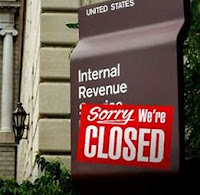
WASHINGTON — The Internal Revenue Service announced in Notice 2019-11, issued on January 16, 2019 that it is waiving the estimated tax penalty for many taxpayers whose 2018 federal income tax withholding and estimated tax payments fell short of their total tax liability for the year.
The IRS is generally waiving the penalty for any taxpayer who paid at least 85 percent of their total tax liability during the year through federal income tax withholding, quarterly estimated tax payments or a combination of the two. The usual percentage threshold is 90 percent to avoid a penalty.
The waiver computation announced today will be integrated into commercially-available tax software and reflected in the forthcoming revision of Form 2210 and instructions.
This relief is designed to help taxpayers who were unable to properly adjust their withholding and estimated tax payments to reflect an array of changes under the Tax Cuts and Jobs Act (TCJA), the far-reaching tax reform law enacted in December 2017.
“We urge people to check their withholding again this year to make sure they are having the right amount of tax withheld for 2019.”
The updated federal tax withholding tables, released in early 2018, largely reflected the lower tax rates and the increased standard deduction brought about by the new law. This generally meant taxpayers had less tax withheld in 2018 and saw more in their paychecks.
However, the withholding tables couldn’t fully factor in other changes, such as the suspension of dependency exemptions and reduced itemized deductions. As a result, some taxpayers could have paid too little tax during the year, if they did not submit a properly-revised W-4 withholding form to their employer or increase their estimated tax payments.
For waiver purposes only, today’s relief lowers the 90 percent threshold to 85 percent. This means that a taxpayer will not owe a penalty if they paid at least 85 percent of their total 2018 tax liability.
If the taxpayer paid less than 85 percent, then they are not eligible for the waiver and the penalty will be calculated as it normally would be, using the 90 percent threshold. For further details, see Notice 2019-11.
Although the IRS won’t begin processing 2018 returns until Jan. 28, software companies and tax professionals will be accepting and preparing returns before that date.
Read more at: Tax Times blog














